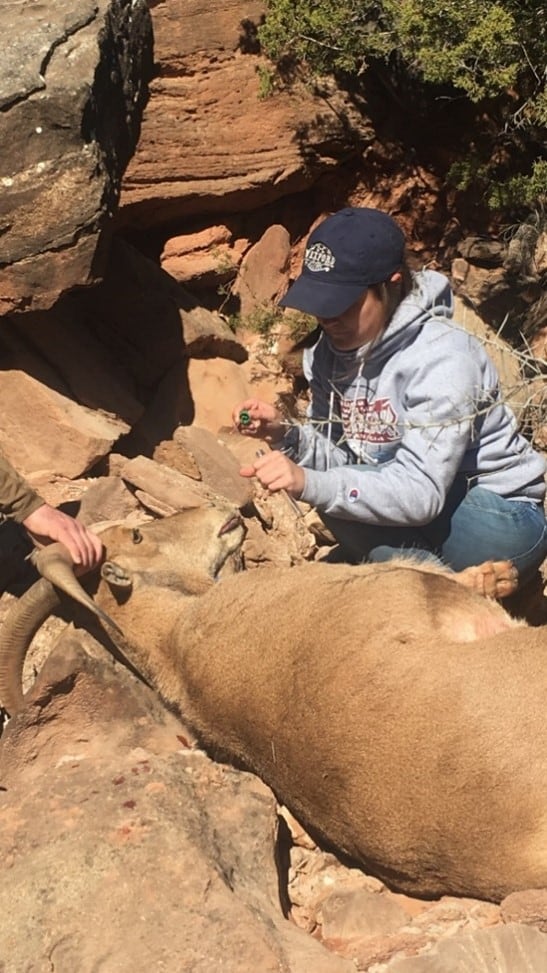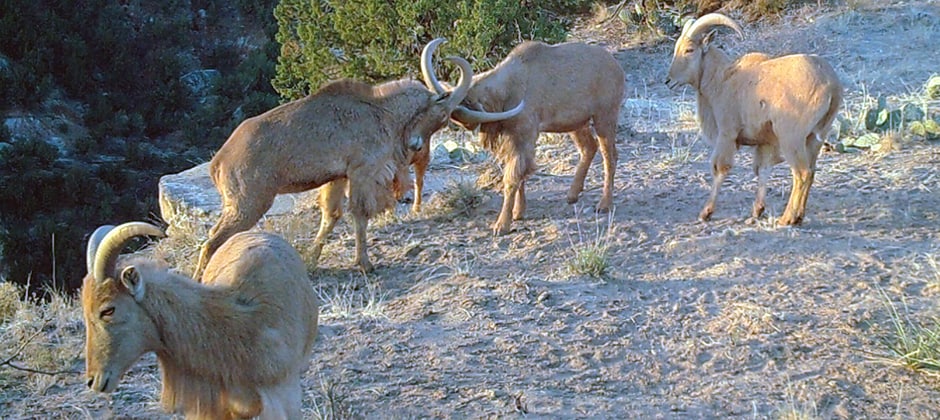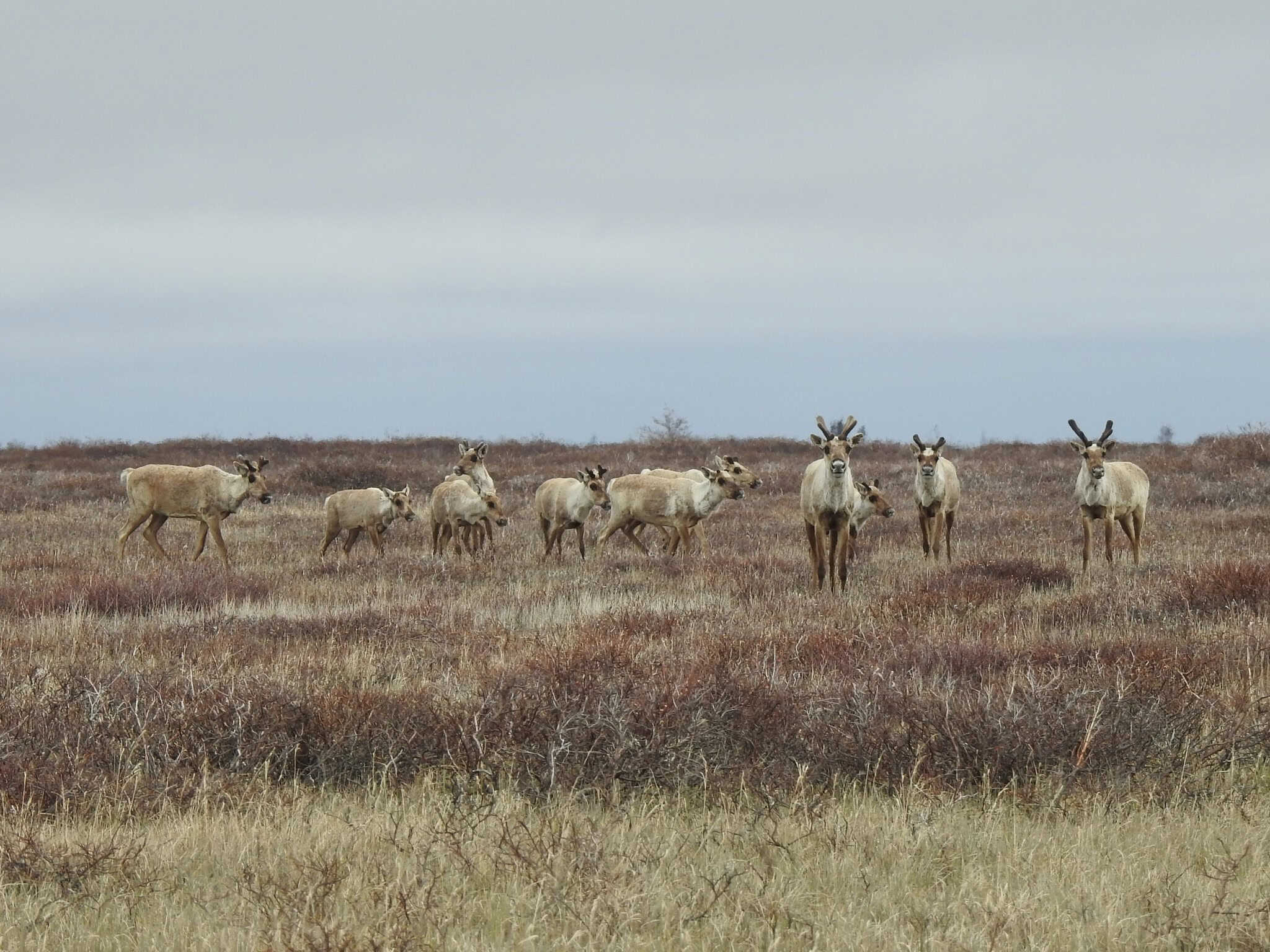Share this article
Aoudad introduced to U.S. comprise 2 distinct subspecies
In the century since Barbary sheep were brought from North Africa to the United States, they have spread from zoos to ranches to the wild, raising questions about their impacts on native ecosystems.
“It’s definitely a controversial topic here in Texas,” said Emily Wright, a PhD student at Texas Tech University.
In a study published recently in Ecology and Evolution, Wright and her co-authors examined the genetic diversity of four populations—two in Texas, one in California and another in New Mexico. Gaining a better understanding of these sheep—also known as aoudad—may give researchers a better idea of how to control their numbers if they are deemed to be a problem. They gathered these samples thanks to hunters, conservation organizations, and Texas Parks and Wildlife.
First brought to what are now known as the Bronx Zoo and the Smithsonian’s National Zoo in the early 20th century, aoudad (Ammotragus lervia) reproduced so successfully in captivity that they were traded to zoos across the country. From there they spread to private ranches, including that of newspaper magnate William Randolph Hearst in California. Some of those in California and New Mexico escaped into the wild. Then, Texas Parks and Wildlife translocated some into the Palo Duro Canyon to provide hunters with another game animal since mule deer (Odocoileus hemionus) were few in the area at the time.
“People love to hunt them—it’s more of a hard hunt than just sitting in a deer blind,” Wright said.
Perhaps because they were so difficult to hunt, aoudad spread faster across Texas than they could be harvested. While it’s unclear if the introduced aoudad are harmful enough to be considered invasive, biologists have found that they compete with native bighorn sheep (Ovis canadensis)—which are declining in Texas—for resources.

Researcher Emily Wright takes a nasal swab from an aoudad harvested during a removal at Palo Duro Canyon State Park. Credit: Emily Wright
Wright and her team’s work comes from part of a larger study on bighorn genetics in Texas—the ongoing subject of Wright’s PhD work, partially funded by the Texas Bighorn Society and Wild Sheep Foundation. Wright and her colleagues collected tissue samples of aoudad while conducting their bighorn sheep work as a side project.
In their native range, which stretches from Egypt to Morocco, aoudad are split into six distinct subspecies. Wright’s genetic analysis revealed that the sheep in New Mexico and California belong to the Atlas aoudad (A. l. lervia) subspecies. The Texas ungulates’ genes revealed that they were a mixed group, with individuals from both the Atlas and the Sahara aoudad (A. l. sahariensis) subspecies. Some belonged to one or the other of the subspecies, while others had mixed genes from both.
There was potentially a third group represented in the data they examined, but the researchers didn’t have enough DNA from the North African subspecies to compare to aoudad in America.
This information is important for determining how to manage aoudad in Texas. Other researchers are looking at the possibility that aoudad may spread pneumonia among bighorn sheep populations, for example. Having a better idea of the genetic make-up of aoudad subspecies that may or may not be more susceptible to the disease could help researchers understand more about it.
Managers will likely need to determine ways to control aoudad numbers. Texas alone has 30,000 of them, compared to only about 1,500 bighorns. That disparity suggests that the newcomers could be outcompeting native sheep.
The other side of the coin relates to aoudad in their native habitat in North Africa, where numbers are declining. Aoudad are considered vulnerable by the International Union for Conservation of Nature due to factors like habitat loss from human development, resource exploitation and climate change. Only between 5,000 and 10,000 aoudad remain in their native range, Wright said. In the future, the Texas aoudad could serve as a source population for reintroductions to parts of North Africa where the ungulates’ populations are imperiled.
“We don’t need them here in Texas, but they do need them in North Africa,” Wright said.
With this in mind, it could be important for wildlife managers to determine which Texas populations might be more heavily hunted and which could be more valuable in the future. The genetic information from Wright’s study could serve as an indicator to consider in terms of management. For example, populations with more unique strands of DNA might be worth preserving versus those whose genetic pools are more similar to each other, or more common.
The challenge will be to manage the aoudad in a way that they aren’t a detriment to the native bighorn sheep.
Header Image: Aoudad in Palo Duro Canyon, Texas. Credit: Emily Wright








